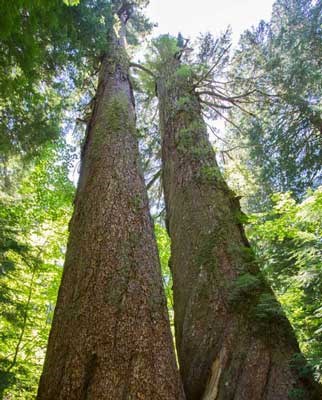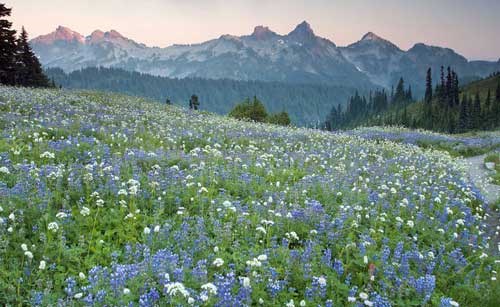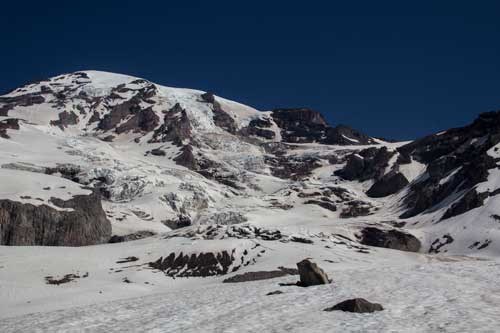Life Zones of Mount RainierMount Rainier has three main life zones where plants and animals live. Life zones are ecosystems found at different elevations within the park. The plants and animals that live in the life zones have special adaptations. An adaptation is a body part, trait, or a behavior that helps a living thing survive.At Mount Rainier: The forest life zone ranges from 1,700 to 5,000 feet in elevation. The subalpine life zone ranges from 5,000 to 7,000 feet in elevation. The alpine life zone ranges from 7,000 to 14,410 feet in elevation. 
NPS/ Emily Brouwer Forest Life ZoneYou are walking down a forest trail in Mount Rainier National Park. The ground is covered with ferns and mushroom-covered logs. Everything feels damp, even the air. The trail is lined with trees whose trunks are so wide it would take 6 friends holding hands to reach all the way around them. 
NPS/ Emily Brouwer Subalpine Life ZoneAs you continue to hike, the trail turns sharply uphill and leads you up a steep ridge. Up, up, up you climb. The dark forest around you begins to thin and more sunlight. The trees are not nearly as tall or large. Eventually the forest opens into a broad meadow. Purple, pink, blue, and yellow wildflowers create a colorful carpet across the ground. The few trees that still remain are species like whitebark pine and mountain hemlock and grow in small clusters throughout the meadow. This is the subalpine. 
NPS/ Emily Brouwer Alpine Life ZoneContinuing your trek up Mount Rainier, the meadows are soon replaced with car-sized boulders and patches of snow. To go any further we would need specialized mountain climbing gear or grow hooves like a mountain goat. Their hooves have a hard outer ring with a spongy center that helps them stick to rocks, like suction cups.The alpine is a harsh environment. Aside from lichen and some species of heather (a small shrub) no other plants can easily grow here. Some animals venture into the higher elevations during the summer, but aside from mountain goats, a few species of birds, and a newly discovered species of ice worm, not many animals can survive in the alpine year-round. There are over 964 different species of plants found in Mount Rainier National Park.
Click here for more information about the plants and life zones of Mount Rainier. |
Last updated: January 27, 2025
